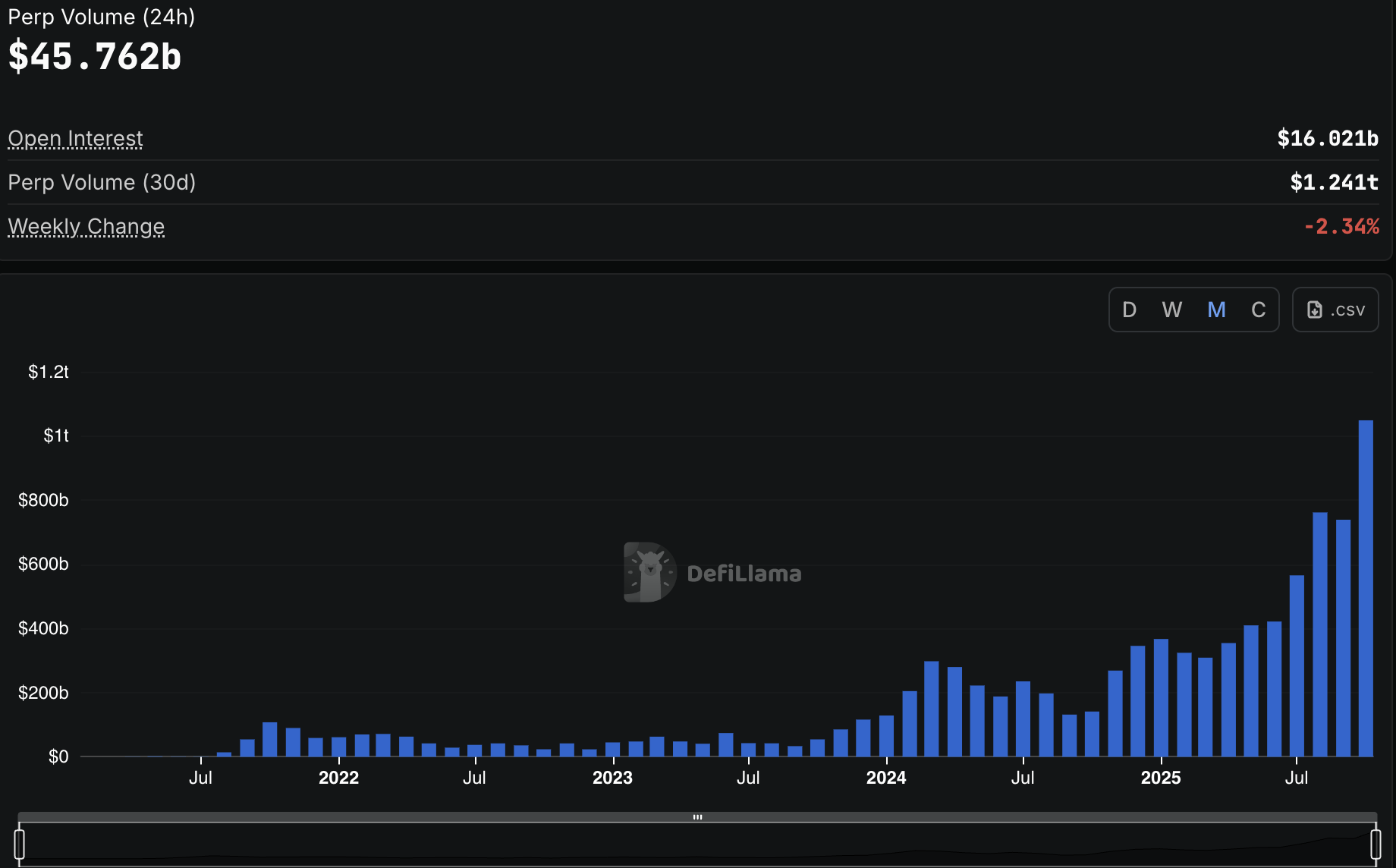Decentralized perpetual futures have surpassed $1 trillion in monthly trading volume for the first time, signaling a major shift in crypto derivatives trading from centralized to on-chain platforms. This milestone, driven by low fees and high liquidity, underscores DeFi’s growing maturity.
-
DeFi perps hit $1.05 trillion in October 2025, per DeFiLlama data, outpacing many traditional markets.
-
Platforms like Hyperliquid and Lighter lead with $316 billion and $259 billion in volume, respectively, attracting institutional flows.
-
Daily turnover reaches $45.7 billion, with open interest at $16 billion, fueled by Bitcoin volatility above 45% and stablecoin liquidity over $1.25 trillion year-to-date.
Discover how decentralized perpetual futures volume exploded to $1T in 2025, reshaping DeFi trading. Explore key drivers, platforms, and future implications for crypto investors today.
What Is the Significance of $1 Trillion in Decentralized Perpetual Futures Volume?
Decentralized perpetual futures volume reaching $1 trillion marks a pivotal moment in the cryptocurrency ecosystem, demonstrating the scalability and appeal of on-chain derivatives markets. For the first time, these DeFi platforms have matched the scale of traditional financial derivatives, with $1.05 trillion recorded in October 2025 alone, according to DeFiLlama. This surge indicates a migration of trading activity from centralized exchanges to decentralized venues, offering benefits like lower costs and enhanced transparency.
How Are Leading Platforms Driving This Growth in DeFi Perps?
Hyperliquid, a specialized Layer-1 blockchain for derivatives, has emerged as a frontrunner by processing over $316 billion in monthly volume, exceeding the Bitcoin futures activity on major centralized platforms like Coinbase and Kraken. Lighter, operating on the Arbitrum Layer-2 network, follows closely with $259 billion, benefiting from ultra-low transaction fees post-Dencun upgrade. Even after facing challenges, Aster maintained $178 billion in volume, highlighting the resilience of these ecosystems.
Data from DeFiLlama shows daily turnover at $45.7 billion and open interest climbing to $16 billion, reflecting sustained trader interest rather than fleeting speculation. The concentration of activity in a few high-performance decentralized exchanges (DEXs) is streamlining on-chain leverage, making it more efficient than fragmented alternatives. As per insights from blockchain analysts, this consolidation is key to handling institutional-scale flows without compromising speed or security.
Bitcoin’s realized volatility surpassing 45% has amplified demand for these platforms, where funding rates rise and execution speeds outpace centralized counterparts. Stablecoin settlement volumes, exceeding $1.25 trillion year-to-date, provide the deep liquidity pools needed for large positions. On Ethereum Layer-2 solutions, gas fees have plummeted to under a cent, enabling high-leverage trades—like 100x positions on Lighter—for less than $0.01, a stark contrast to the $20–$45 fees on centralized exchanges during peak periods in 2021–2022.

Source: DeFiLlama

Frequently Asked Questions
What Factors Are Pushing Traders Toward On-Chain Perpetual Futures?
Traders are migrating to on-chain perpetual futures due to ultra-low fees on Layer-2 networks, deep stablecoin liquidity, and faster execution times compared to centralized exchanges. Events like recent AWS downtimes and regulatory scrutiny on platforms such as Binance have accelerated this shift, with liquidity moving swiftly within DeFi ecosystems.
How Does DeFi Perps Volume Compare to Centralized Exchanges?
Decentralized perpetual futures now rival centralized exchanges in scale, with $1.05 trillion in October 2025 volume surpassing combined Bitcoin futures on Coinbase and Kraken. This growth is supported by volatility spikes and cost efficiencies, making DeFi a viable alternative for leveraged trading in real-time market conditions.
Key Takeaways
- Historic Milestone Achieved: Decentralized perpetual futures crossed $1 trillion in monthly volume, a first that equals traditional derivatives markets in size and efficiency.
- Platform Leadership: Hyperliquid and Lighter dominate with massive flows, enabled by Layer-1 and Layer-2 innovations that reduce costs to pennies per trade.
- Future Implications: Rising institutional interest could lead to on-chain collateral posting, potentially realigning crypto trading toward decentralized models permanently.
Conclusion
The $1 trillion milestone in decentralized perpetual futures volume highlights DeFi’s evolution into a robust alternative to centralized trading, driven by platforms like Hyperliquid and factors such as low fees and high volatility. As stablecoin liquidity expands and on-chain infrastructure matures, this trend suggests a structural shift in crypto derivatives. Investors should monitor institutional adoption to gauge long-term impacts on market dynamics.
